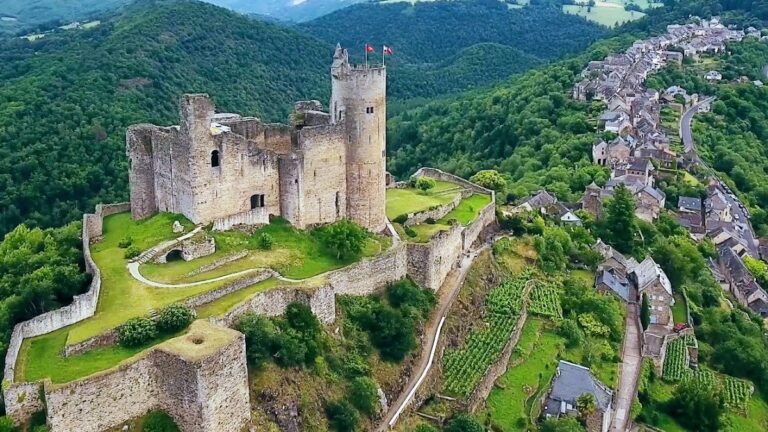Château de Terride: A 17th-Century Hunting Lodge and Vineyard Estate in Puycelsi, France
Visitor Information
Google Rating: 4.8
Popularity: Low
Google Maps: View on Google Maps
Official Website: chateaudeterride.com
Country: France
Civilization: Unclassified
Remains: Military
History
The Château de Terride is located in the commune of Puycelsi, France. It was erected in the mid-17th century by the Grenier de Terride family, who were skilled glassmakers from the Albigeois region. According to family tradition, their ability to practice glassmaking was granted as a special privilege by King Saint Louis, in recognition of their role during the Crusades. This association links the family to the medieval period and highlights the lasting importance of their craft.
Originally constructed beginning in 1652, the château functioned as a hunting lodge set in a heavily forested environment near the Grésigne forest. This setting was ideal for the leisure pursuits of the noble owners during that time. Over the centuries, the estate underwent continual transformations, particularly between the 17th and 19th centuries, as its focus gradually shifted from hunting to agricultural production, notably viticulture.
Around 1960, the estate’s land was formally converted into a vineyard, which eventually covered 35 hectares. This vineyard has the distinction of being the only one classified under the Gaillac appellation within the commune of Puycelsi. In 1996, Jean-Paul and Solange David acquired the château and expanded its operations. Today, it is managed by their descendants, Alix David and Romain Gérard, who continue to cultivate vines using local grape varieties.
Remains
The Château de Terride is characterized by its restrained classical architectural design, consistent with its original purpose as a hunting lodge. It is situated amid a wooded landscape, closely linked to the Grésigne forest, emphasizing the estate’s initial connection to hunting activities. The building’s sober style reflects the practical and noble functions it was intended to serve.
The château stands at the center of an estate that now includes extensive vineyards totaling 35 hectares. These vineyards are planted with traditional local grape varieties. Red wines are produced from Braucol and Duras grapes, while white wines come from Loin de l’œil and Mauzac varieties. This agricultural development marks the site’s long-standing evolution from noble leisure grounds to a productive vineyard estate.
No archaeological artifacts, decorative inscriptions, or structural elements such as staircases or gates have been specifically documented at the site. The existing château and its grounds reflect a continuous adaptation from their 17th-century origins to their present use in viticulture, preserving the essence of the original hunting lodge within a rural forest environment.










